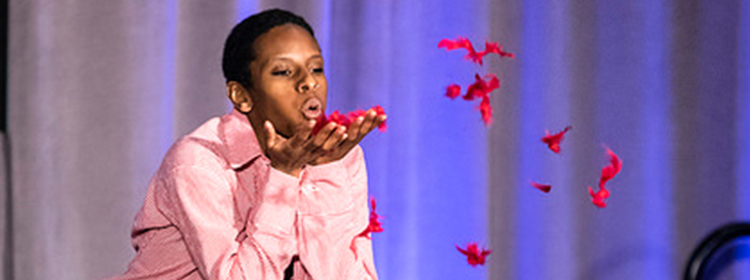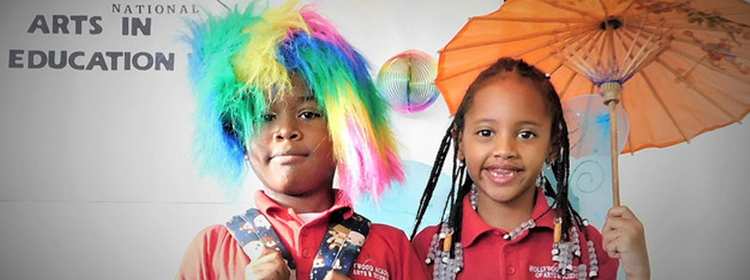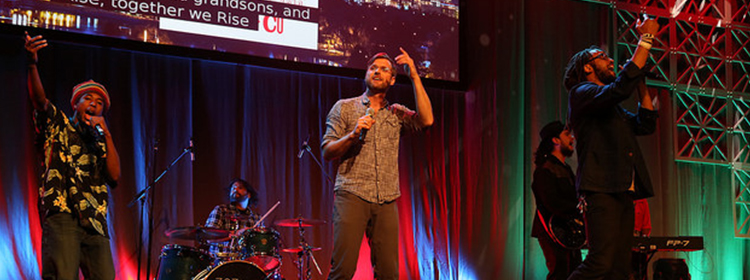Definition of Cultural Equity
Cultural equity embodies the values, policies, and practices that ensure that all people—including but not limited to those who have been historically underrepresented based on race/ethnicity, age, disability, sexual orientation, gender, gender identity, socioeconomic status, geography, citizenship status, or religion—are represented in the development of arts policy; the support of artists; the nurturing of accessible, thriving venues for expression; and the fair distribution of programmatic, financial, and informational resources.
Acknowledgements & Affirmations
-
In the United States, there are systems of power that grant privilege and access unequally such that inequity and injustice result, and that must be continuously addressed and changed.
-
Cultural equity is critical to the long-term viability of the arts sector.
-
We must all hold ourselves accountable, because acknowledging and challenging our inequities and working in partnership is how we will make change happen.
-
Everyone deserves equal access to a full, vibrant creative life, which is essential to a healthy and democratic society.
-
The prominent presence of artists challenges inequities and encourages alternatives.
In keeping with our ongoing work around cultural equity, Americans for the Arts has prepared the following statement concerning harassment and misconduct.
Americans for the Arts in all matters related to employees, board members, committee and task force members or volunteers is guided by a set of principles outlined in our Board of Directors manual, Employee Handbook, Values Statement, and our Statement on Cultural Equity, which was unanimously adopted by the Americans for the Arts Board of Directors in 2016. In these statements Americans for the Arts embraces values, policies and practices that ensure that all people are represented and treated fairly in the work of our mission, places of work, and delivery of service, without regard to race/ethnicity, national origin, age, physical or mental disability, sexual orientation, gender, gender identity, socioeconomic status, geography, citizen status, genetic predisposition, marital status or religion. When accusations of inequity arise, including harassment on the basis of any of these characteristics, whether verbal, physical, or any other, Americans for the Arts is committed to taking corrective action against such inequities within our policies, systems, programs, affiliations, and services. Such corrective action may include discontinuing relations with or to taking disciplinary action against anyone found to have violated this policy, whether employee, contractor, board member, volunteer, customer, member, vendor or other. Americans for the Arts will deliberately and swiftly investigate every accusation.
Modeling Through Action
To provide informed, authentic leadership for cultural equity, we strive to…
-
Pursue cultural consciousness throughout our organization through substantive learning and formal, transparent policies.
-
Acknowledge and dismantle any inequities within our policies, systems, programs, and services, and report organization progress.
-
Commit time and resources to expand more diverse leadership within our board, staff, and advisory bodies.
Fueling Field Progress
To pursue needed systemic change related to equity, we strive to…
-
Encourage substantive learning to build cultural consciousness and to proliferate pro-equity policies and practices by all of our constituencies and audiences.
-
Improve the cultural leadership pipeline by creating and supporting programs and policies that foster leadership that reflects the full breadth of American society.
-
Generate and aggregate quantitative and qualitative research related to equity to make incremental, measurable progress towards cultural equity more visible.
-
Advocate for public and private-sector policy that promotes cultural equity.
The Board of Directors of Americans for the Arts would like to acknowledge the original board members, artists, staff, and community leaders who, in 1988, came together to create Americans for the Arts’ first diversity statement.
Download the Statement on Cultural Equity
Below is a PDF of Americans for the Arts’ Statement on Cultural Equity. We’ve also included an editable version in Word for your convenience to use as a working model for your organization if needed.
Americans for the Arts is developing and continuing many strategies and programs to act upon the Statement on Cultural Equity. One example of action related to this action area is:
At the end of June, 2016, Americans for the Arts staff will participate in a staff retreat with dedicated time to begin talking about equity inside the organization with the guidance of Carmen Morgan of ArtEquity and Margie Johnson Reese, board member and head of the board’s Cultural Equity Task Force. This follows on a series of meetings by floor and within departments that have been happening, and will continue to happen as we set our a specific action agenda for meeting the internally-focused goals of the Statement.
Americans for the Arts is developing and continuing many strategies and programs to act upon the Statement on Cultural Equity. One example of action related to this action area is:
Americans for the Arts is currently in the middle of a two-part organizational cultural assessment. This process, led by consultant Carmen Morgan of ArtEquity and the staff’s Culture Committee, includes both one-on-one interviews and an all-staff assessment to help us understand where to begin, and what policies, systems, programs, or services can be improved for all.
Americans for the Arts is developing and continuing many strategies and programs to act upon the Statement on Cultural Equity. One example of action related to this action area is:
Expanding leadership starts, for us, with a review of our hiring policies and practices. In January 2016, Americans for the Arts formally implemented HR policies that will ensure the organization improves efforts in identifying, interviewing, and hiring people from diverse backgrounds. We commit to continuing staff position searches until we feel confident that at least one of the top five qualified candidates for any open position is of a diverse background. We commit to a) identifying specific gaps in areas of diversity that we believe will help us reach a deeper pool of candidates through new and wider channels for promotion, b) examine our job post language and hiring process to ensure it is inclusive, and c) enhance the variety of voices and experiences within the organization.
Americans for the Arts is developing and continuing many strategies and programs to act upon the Statement on Cultural Equity. One example of action related to this action area is:
As part of a larger set of equity-related assessment and training programs called Equity 360 that are aimed at helping local arts agencies and others to better assess the equitable nature of their programs, services, and policies, and then to adjust those programs, services, and policies over time, Animating Democracy, with support from the Nathan Cummings Foundation, has curated a suite of resources and assessment tools related to equitable grantmaking. These resources and tools will inform and support grantmakers in their work so that they can create sustainable, culturally diverse environments, and will eventually be joined by other Equity 360 toolsets.
Americans for the Arts is developing and continuing many strategies and programs to act upon the Statement on Cultural Equity. One example of action related to this action area is:
Among many efforts being undertaking by Americans for the Arts, particularly with the guidance of our Emerging Leaders network, we are committing to increasing scholarships at both our Annual Convention and our National Arts Marketing Conference that are allocated specifically to those who come from and/or serve underrepresented communities.
Americans for the Arts is developing and continuing many strategies and programs to act upon the Statement on Cultural Equity. One example of action related to this action area is:
Today, we have released a one-sheet outlining some of the Equity and Diversity-related findings of the Local Arts Agency Census, which surveyed over 1100 local arts agencies in the United States. Among the key findings: 35% of local arts agencies felt they “have an appropriate level of diversity” in their organization, and 33% have adopted diversity policies that guide program and funding decisions. Download the one-sheet below to find out more.
Americans for the Arts is developing and continuing many strategies and programs to act upon the Statement on Cultural Equity. One example of action related to this action area is:
We continue to expand on the good work begun through the Arts Education State Policy Pilot Program, through which we have been working over the last two years to pursue pro-arts-education policy objectives, including the expansion of funding of arts-based interventions in Title I schools. The Title I program provides financial assistance to educational agencies and schools with higher numbers of low-income families to ensure that they can face the challenges of state academic standards head on—and the arts are a perfect tool to do that. After success in California, we now plan to expand that effort to provide equitable access to arts education to more states in the coming years.















